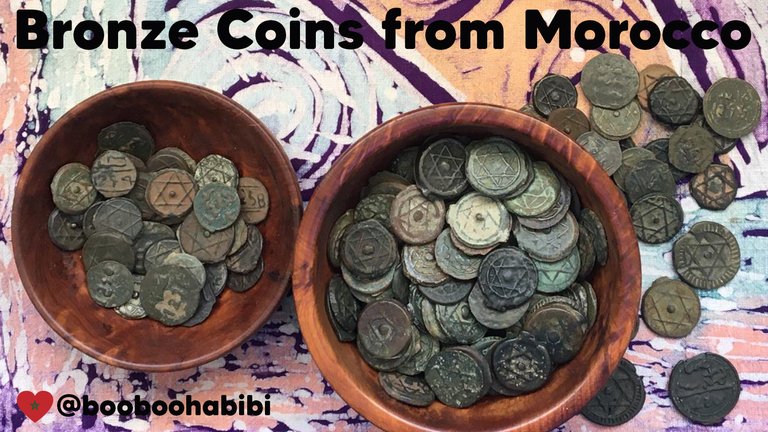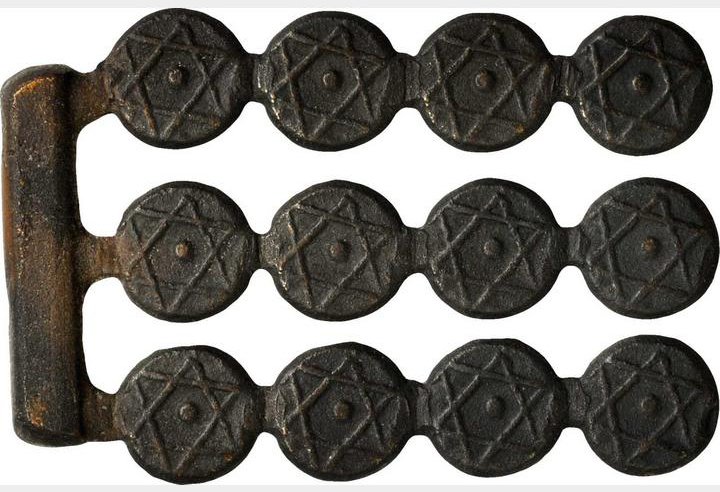
Hello dear Hive Community and coin collectors all over the World!
This is my first post about coins. Normally I post Splinterlands content, but I have been enjoying the numismatic posts from a fellow Hivean so much, that it is high time to start showing some of my coins.
I collected coins for many years until I sold everything one day during a time of financial hardship. It was a painful decision to make and I have regretted it ever since. I started again about 3 years ago, when I came across a coin on a flea market in Berlin, that absolutely fascinated me.

I had no idea where it came from. From the Star of David (or also know as the Seal of Solomon), I assumed it was an old jewish coin from the Middle East. As it was not well minted and damaged at the side (I didn’t know at the time that it was a bronze cast), I didn’t make the effort to research it.
Coincidentally, I found several more of these coins in a local antique shop and to my total surprise, these coins actually come from the country where I currently live: Morocco! That did it! I was a collector again and began travelling all over the country chasing these little beauties, asking locals to tell me what they knew about these ‘Fils’ (also known as Falus), researching the internet and contacting experts in Germany and England, who were auctioning such coins on numismatic sites or selling them on Ebay.
Once I had a bunch of them, I began cataloguing and archiving them and now it is time to show them and write about them here in our wonderful community!

The 'Fils' coins were cast in bronze during the 18th and 19th Centuries, before European colonial powers took over currency production and money supply in the Kingdom of Morocco. I will write more about the numismatic history of this part of the World in future posts but here today I want to show you how these coins were made.
Clay molds were made (one each for the obverse and reverse), and the coiner punched the designs into the clay mold. When the clay was baked and hardened, another mold was made of the clay mold to then be filled with molten cast iron. Once the molds were ready for use, the two pieces were put together to form a chamber into which the molten bronze was poured.

However, rather than just casting one piece at a time, they made a channel between pieces (called a gutter) and cast four pieces per branch. These branches were joined at the top to make a “tree,” and 12 coins were cast in a single pour. When the metal cooled, the coins were broken apart and the jagged edges filed down.

I hope you liked my post about my new collection of coins and I will be writing more content about these fascinating coins soon!

image of casting mold from colleconline.com
image of bronze casting tree from stacksbowers.com
and thanks to @thebighigg for encouraging me to write numismatic posts



